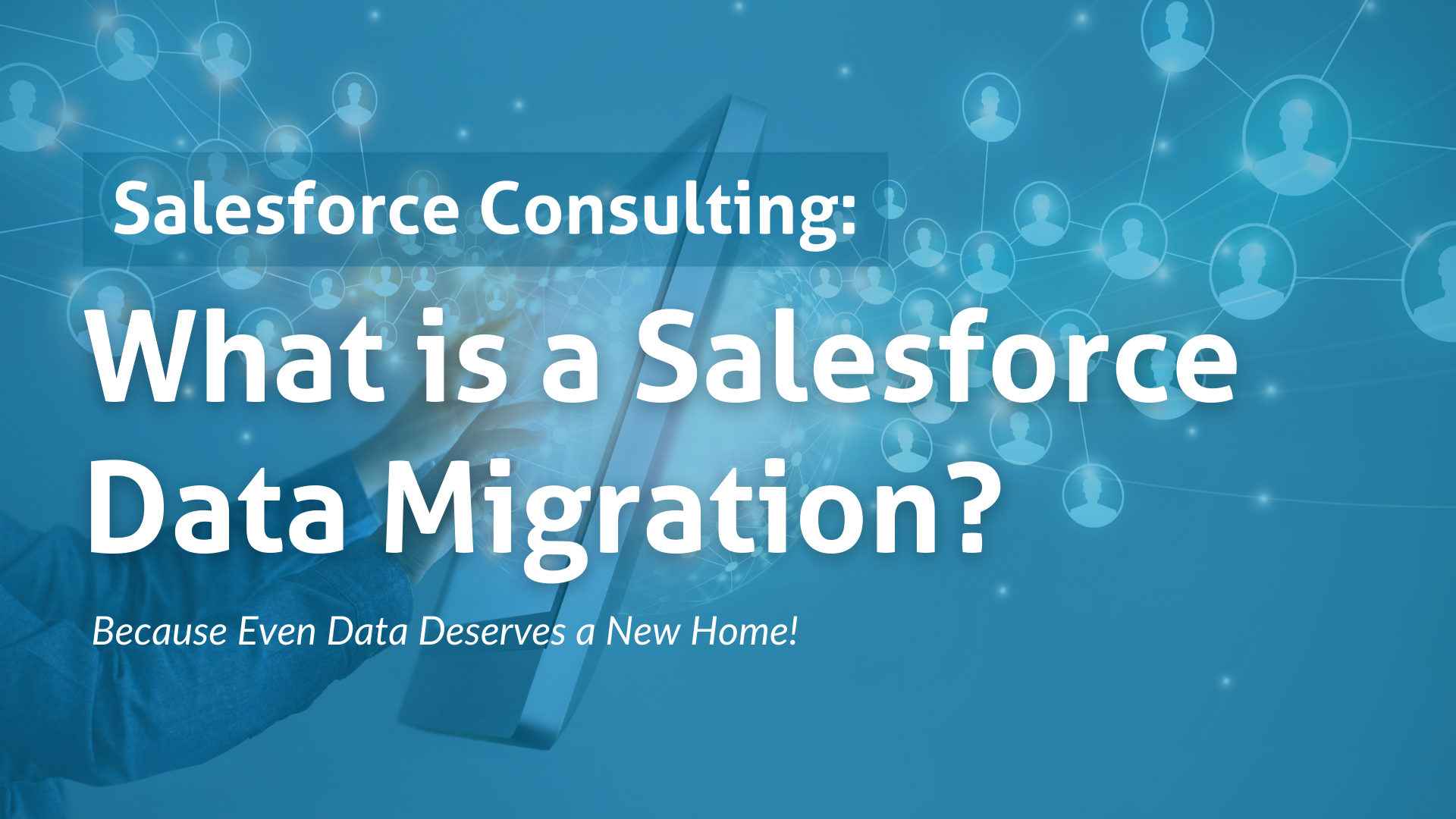DATA MIGRATION & FLOW TUTORIALS
What is a Salesforce Data Migration?
Salesforce Data Loading
March 13, 2024

What is Salesforce Data Migration?
Salesforce data migration is the process of moving data from one or more source systems into Salesforce.
Ok! The question is answered, so we’re done here, right?
Kidding, kidding.
If you’ve ever moved from one home to another, you know it’s no small feat. It involves careful planning, organization, and a lot of heavy lifting—both literally and figuratively. Interestingly, migrating data into Salesforce shares a lot of similarities with moving houses.
Let’s break down this process into a moving checklist, and I’ll show you how each step parallels a step in Salesforce data migration. So grab your boxes (and your data), and let’s get moving!

- Inventory of Current Belongings ↔ Inventory of Current Dataset/Database
Moving: Before packing your life into boxes, you take stock of what you have. This inventory helps you decide what comes with you, what gets donated, and what’s headed for the trash.
Salesforce Data Migration: Similarly, the first step in data migration is to conduct an inventory of your current dataset or database. This involves reviewing all the data you have in your existing systems to determine what needs to be moved to Salesforce, what can be archived, and what should be cleaned or updated.

- Sorting and Labeling ↔ Data Cleansing and Mapping
Moving: Once you know what you’re keeping, you start sorting items by category, labeling boxes for easy identification. This step ensures that when you unpack, everything is organized and easy to find.
Salesforce Data Migration: In the data world, this is akin to cleansing and mapping your data. Cleansing involves removing duplicates and correcting errors, while mapping is the process of matching data fields from your current system to their new homes in Salesforce. Just like labeling boxes, mapping ensures that data lands in the right place in Salesforce.

- Deciding on What to Keep, Sell, or Donate ↔ Data Deduplication and Archiving
Moving: Not everything needs to make the move. Some items might be sold, donated, or thrown away. This decision process helps you reduce clutter and ensures that only the necessary items make it to your new home.
Salesforce Data Migration: This step mirrors the process of data deduplication and archiving. Deduplication means identifying and removing duplicate records, while archiving involves moving outdated or irrelevant data to a separate storage area. This step keeps your Salesforce environment clean and efficient.

- Packing and Labeling Boxes ↔ Preparing and Uploading Data
Moving: With decisions made on what’s coming along, it’s time to pack. You carefully box up your belongings, making sure everything is secure and labeled for its respective room.
Salesforce Data Migration: Now, you’re ready to prepare your data for the move. This involves converting your cleansed and mapped data into a format that can be easily uploaded into Salesforce, often using tools like the Salesforce Data Loader. Just as you’d pack items into boxes, you’re packaging your data for its new home.

- The Move ↔ The Actual Data Migration
Moving: The big day! You load everything into the moving truck, transport it to your new home, and start the process of unloading and unpacking.
Salesforce Data Migration: Similarly, the actual data migration is when you transfer your prepared data into Salesforce. This might be done in stages to ensure everything goes smoothly, and like moving day, it requires careful monitoring to make sure everything arrives safely.

- Unpacking and Setting Up ↔ Post-Migration Cleanup and Validation
Moving: Once you’re in your new home, it’s time to unpack and set everything up. This process might take some time as you figure out the best places for your belongings.
Salesforce Data Migration: After the data has been migrated, you’ll need to do some cleanup and validation. This involves checking that all data has been accurately transferred, ensuring that workflows and processes are functioning correctly, and making any necessary adjustments.

- Housewarming Party ↔ Go-Live Celebration
Moving: Finally, once you’re settled in, you might throw a housewarming party to celebrate your new beginning.
Salesforce Data Migration: Similarly, once your Salesforce data migration is complete and everything is running smoothly, it’s time to celebrate your success! This might not involve a party, but it’s definitely an achievement worth recognizing.

Summary
Migrating data to Salesforce, like moving houses, requires careful planning, organization, and execution. By following these steps, you can ensure a smooth transition to your new “home” in Salesforce, setting the stage for new beginnings and opportunities. Remember, the key to a successful move—whether it’s to a new home or a new CRM system—is in the preparation. Happy migrating!
Need Migration Help?
I specialize in migrating data from any data source into Salesforce. I also teach consultants, admins and analysts how to properly execute migrations. Click the “contact” button below to schedule time with me to learn more!
